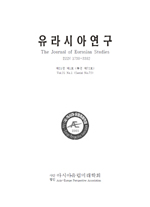- 영문명
- Water Imagery in East Asian Classical Poetry: Linguistic, Cultural, and Eco-Humanities Insights
- 발행기관
- 아시아.유럽미래학회
- 저자명
- 김동교(Dongkyo Kim) 정운조(Unjo Jung)
- 간행물 정보
- 『유라시아연구』제22권 제3호, 313~340쪽, 전체 28쪽
- 주제분류
- 사회과학 > 사회과학일반
- 파일형태
- 발행일자
- 2025.09.30
6,160원
구매일시로부터 72시간 이내에 다운로드 가능합니다.
이 학술논문 정보는 (주)교보문고와 각 발행기관 사이에 저작물 이용 계약이 체결된 것으로, 교보문고를 통해 제공되고 있습니다.

국문 초록
본 연구는 한·중·일 고전 시가에 나타난 물(水) 이미지를 개념 은유 이론, 문화언어학, 생태인문학적 관점에서 비교·분석하여, 동아시아에서 물이 지닌 보편성과 특수성을 규명하는 것을 목적으로 한다. 연구 대상은 한국의 관동별곡·어부사시사, 중국의 시경·초사, 일본의 만요슈·신코킨와카슈 등6종의 시가이다. 원문과 번역문을 대상으로 물 이미지 유형을 색인하고, M1~M6 은유 코드(생명, 시간, 정화, 경계 해체, 감정의 거울, 이상향 구현)를 설정하여 분석하였다. 분석 결과, 세 문화권 모두 물을 생명·시간·정화의 상징으로 인식하며 인간·자연·사회의 유기적 순환을 드러내는 공통점을 보였다. 그러나 한국은 경계 해체와 이상향 구현, 중국은 감정의 거울과 공동체 질서, 일본은 무상과 찰나적 감각미를 강조하는 차별성을 나타냈다. 물 이미지는 단순한 서정적 묘사가 아니라 세계관·인간관·윤리관을담아내는 상징 체계로 기능하였다. 생태인문학적 관점에서, 물은 자연생태와 문화적 가치가 결합된 ‘생태문화 자원’으로서 인간의 정서와 공동체 윤리를 회복시키는 매개로 해석된다. 본 연구는 동아시아 고전 시가의 물 이미지를 문화언어학·생태인문학 관점에서 최초로 정량적·비교 분석하였으며, 생태교육· 문화콘텐츠 개발에 응용 가능한 이론적 토대를 마련하였다.
영문 초록
This study aims to examine the universality and cultural specificity of water imagery in East Asian classical poetry through the frameworks of Conceptual Metaphor Theory, Cultural Linguistics, and Ecological Humanities. The research targets six representative works: Korea’s Gwandong Byeolgok and Eobu Sasisah; China’s Book of Songs (Shijing) and Songs of Chu (Chuci); and Japan’s Manyoshu and Shinkokin Wakashu.. Original texts and translations were indexed by water imagery, and six metaphorical codes (M1-M6: life, time, purification, boundary dissolution, mirror of emotions, utopian realization) were applied for analysis.
The findings reveal that across the three cultural spheres, water is consistently perceived as a symbol of life, time, and purification, reflecting the organic circulation of relationships among humans, nature, and society. However, distinctive emphases emerge: Korea highlights boundary dissolution and utopian ideals; China underscores water as a mirror of emotions and a symbol of communal order; Japan emphasizes impermanence and the aesthetics of fleeting moments. Water imagery thus functions not merely as lyrical description but as a symbolic system encompassing worldviews, conceptions of humanity, and ethical orientations. From an eco-humanities perspective, water is interpreted as an “eco-cultural resource,” combining natural ecology with cultural values and serving as a medium for restoring human emotions and communal ethics.
This study represents the first quantitative and comparative analysis of water imagery in East Asian classical poetry from a cultural-linguistic and eco-humanities perspective, thereby providing a theoretical foundation applicable to ecological education and the development of cultural content.
목차
Ⅰ. 서론
Ⅱ. 연구 대상과 분석방법
Ⅲ. 한·중·일 고전 시가 속 물(水) 이미지 분석
Ⅳ. 결론 및 향후 연구 과제
참고문헌
키워드
해당간행물 수록 논문
- 중국 대형마트 PB식품에 대한 태도, 만족도 및 재구매의도에 관한 연구: 선택속성, 신뢰, 소비자특성을 중심으로
- 서울시 연립·다세대 강제경매에 관한 시계열 분석: 마코프 국면전환 모형을 활용하여
- 프랑스 수출입과 ESG가 상호 미친 영향에 관한 연구
- 중국 기업의 고령 인적자원관리에 대한 담론 - 제도적 흐름 및 유형 분석을 중심으로
- Predicting Zombie Firms of Listed Companies in China after the COVID-19 Pandemic: Using Explainable Artificial Intelligence
- 다목적 농촌용수개발사업의 실물옵션 분석
- 나치 선전문학 해석 방법으로서의 정치적 종교와 정치적 신학 - 나치 선전시의 사례에서
- 외국인 재소자 처우의 국제인권규범 기준과 한국 교정제도의 개선 과제
- 일제강점기 시기 미국 사회에서의 한일 양국 이민자들 사이의 충돌 양상
- 보험사기의 실태와 대응방안
- 중국 조선족 남성무용 연구 : 19세기 후반부터 21세기 초반까지의 작품분석
- 광주광역시 외국인주민의 심리적 어려움과 사회적 지지: 상담심리학적 관점에서의 인권정책 지원 효과
- 일본 대학의 한국 경제 관련 강좌 연구
- 예술교과의 캡스톤디자인 실천 방안
- 팬데믹 전후 한국 항공사 객실승무원 채용 변화에 관한 문헌고찰: 이미지·서비스 중심에서 직무역량 중심으로
- 한·중·일 고전 시가에 나타난 물(水) 이미지의 언어문화적 형상과 생태인문학적 함의
- 심리환경과 정책환경에 따른 장애인 고용 영향 요인 분석 - 지역사회참여활동의 조절 효과 중심으로
- 한국어 관용표현의 습득요인에 관한 연구 - 베트남 유학생을 중심으로
참고문헌
관련논문
사회과학 > 사회과학일반분야 BEST
- AI와 디지털 문화 산업의 결합에서 저작권 및 윤리적 규범 준수의 필요성 연구
- 종합병원 간호사의 환자안전문화인식과 조직의사소통만족이 안전간호활동에 미치는 영향
- 인공지능(AI)과 윤리
사회과학 > 사회과학일반분야 NEW
- 중국 대형마트 PB식품에 대한 태도, 만족도 및 재구매의도에 관한 연구: 선택속성, 신뢰, 소비자특성을 중심으로
- 서울시 연립·다세대 강제경매에 관한 시계열 분석: 마코프 국면전환 모형을 활용하여
- 프랑스 수출입과 ESG가 상호 미친 영향에 관한 연구
최근 이용한 논문
교보eBook 첫 방문을 환영 합니다!

신규가입 혜택 지급이 완료 되었습니다.
바로 사용 가능한 교보e캐시 1,000원 (유효기간 7일)
지금 바로 교보eBook의 다양한 콘텐츠를 이용해 보세요!



